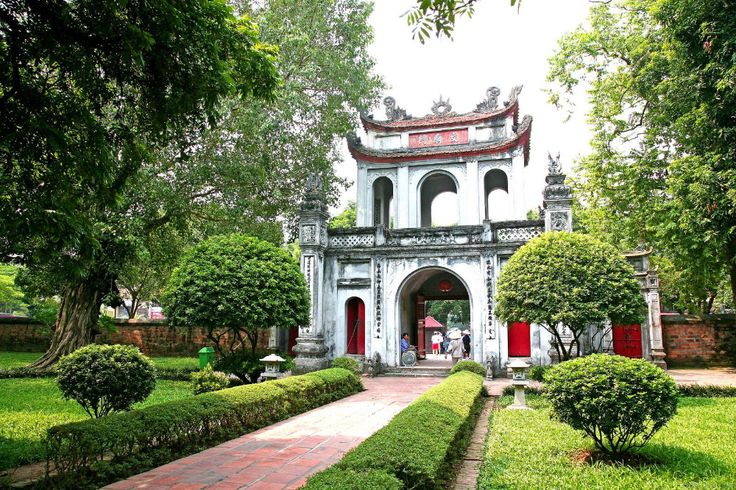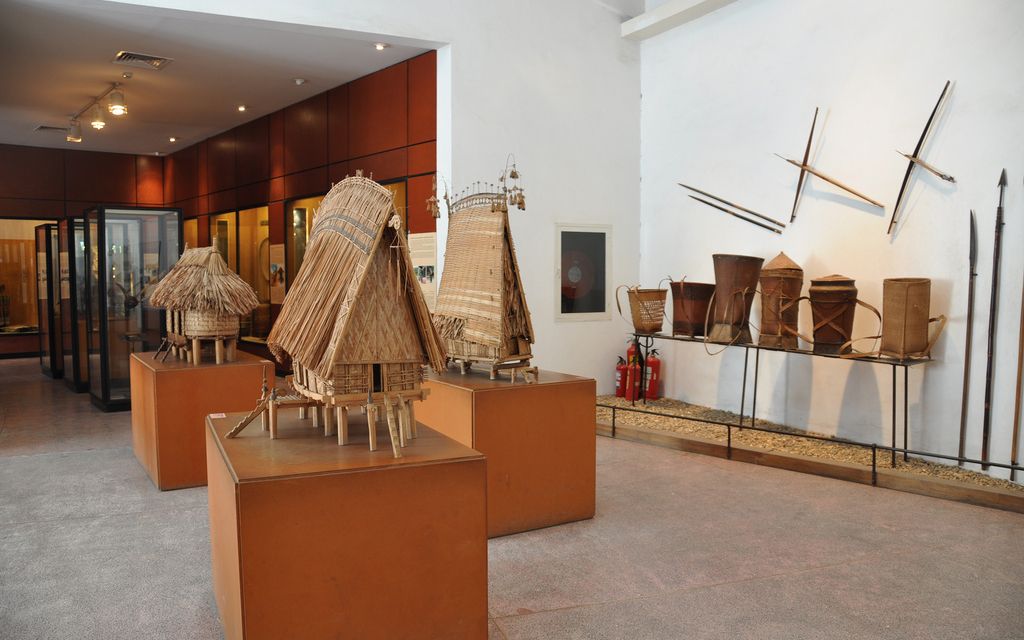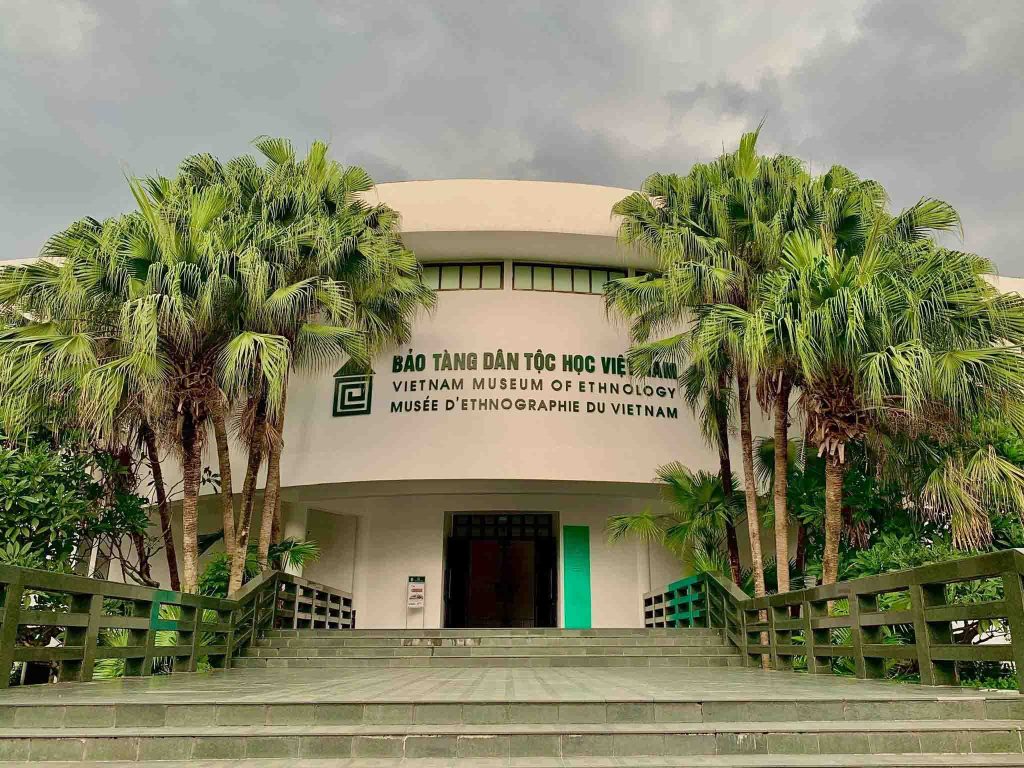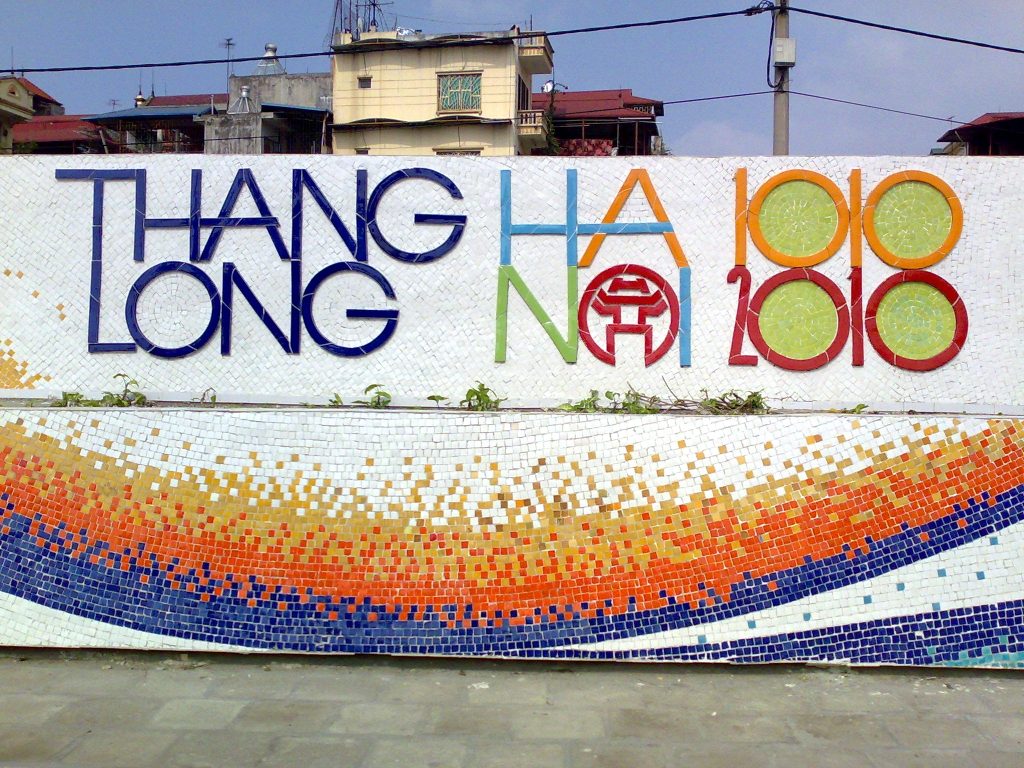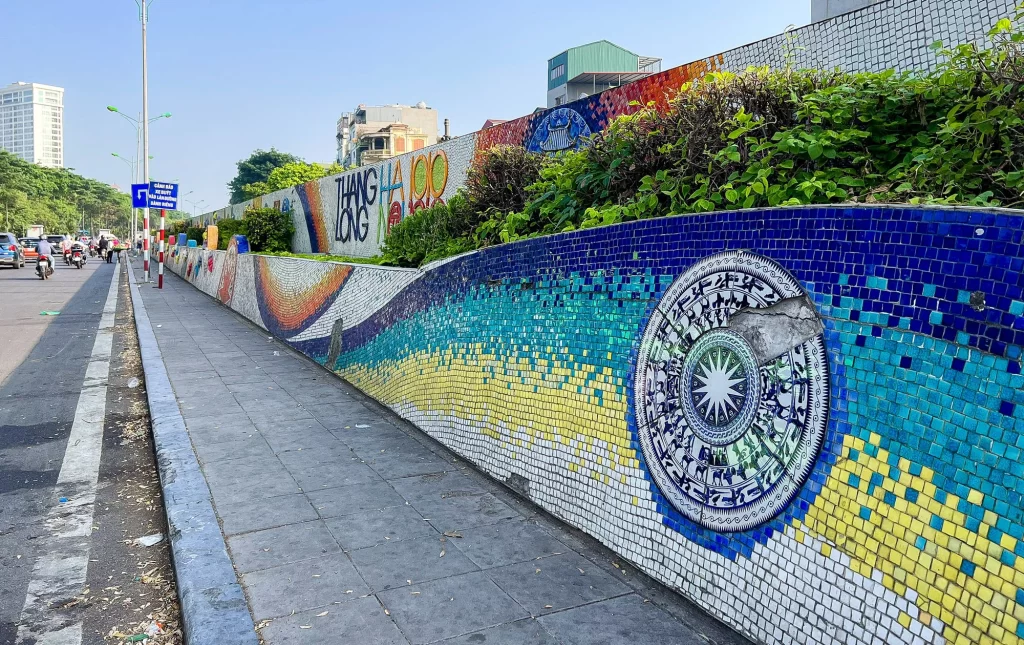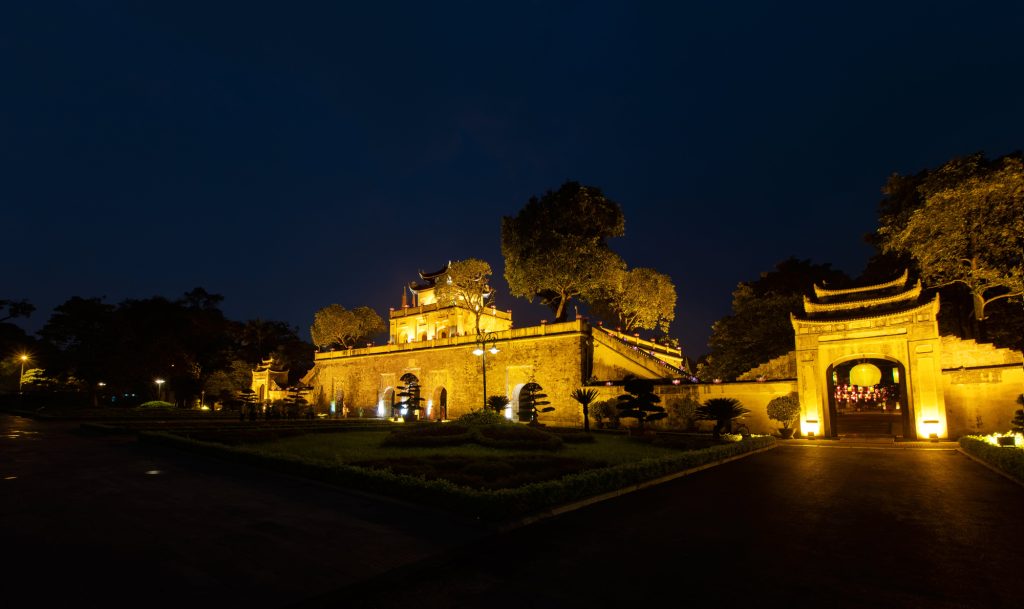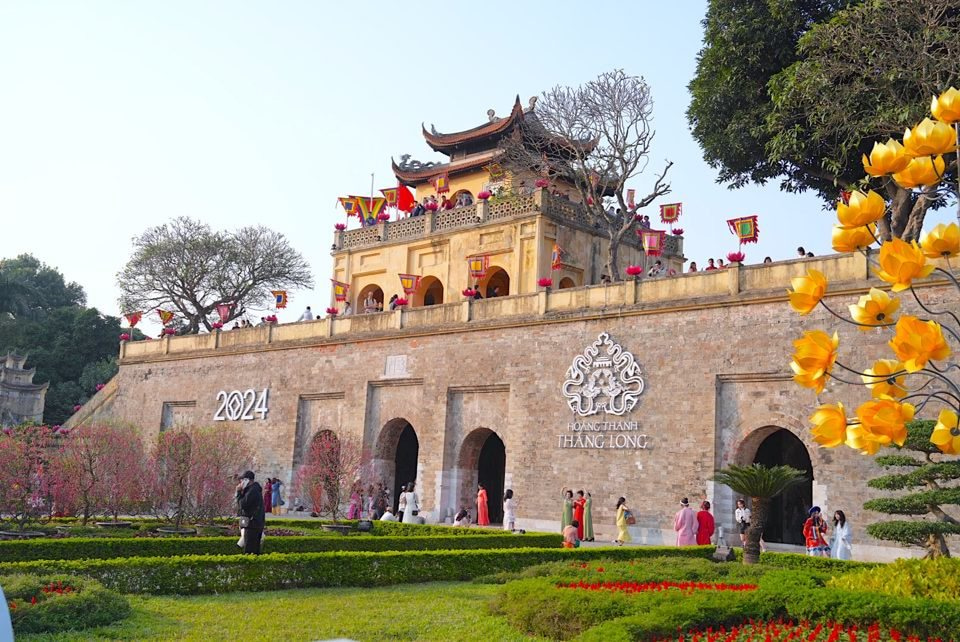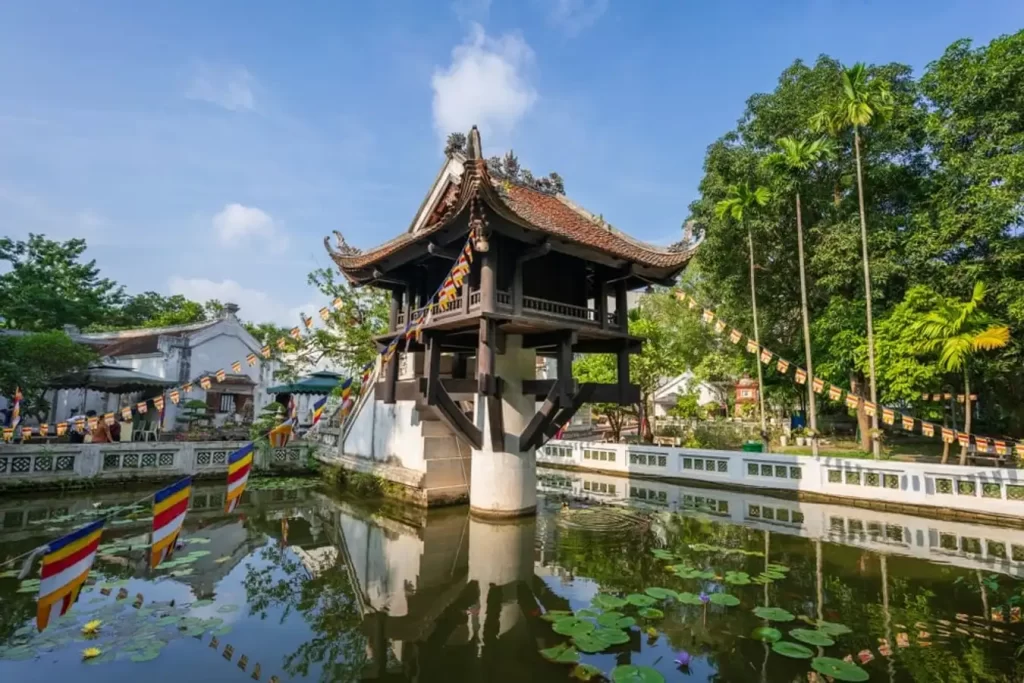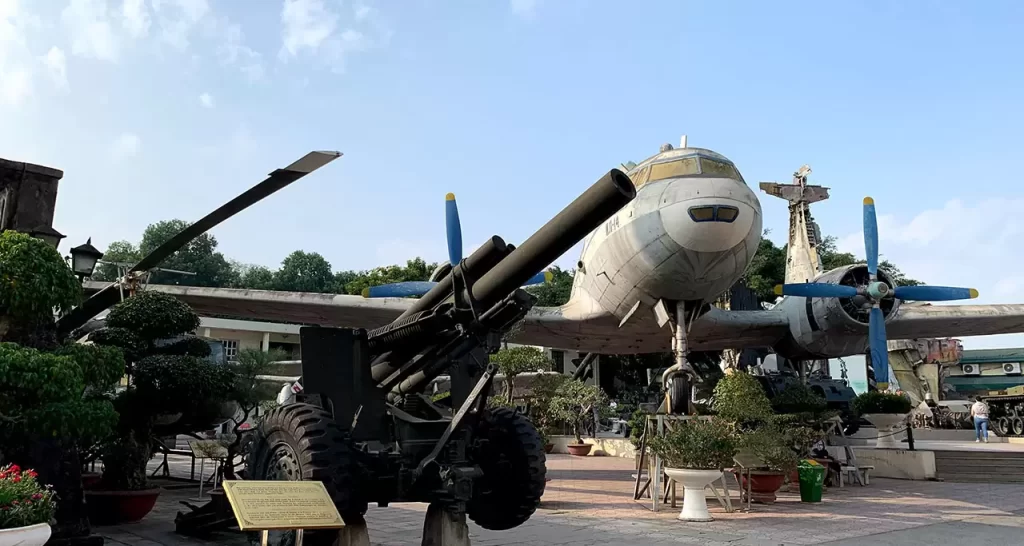Explore the Historic and Cultural Significance of Temple of Literature in Vietnam
The Temple of Literature, known as Văn Miếu Quốc Tử Giám in Vietnamese, stands as Vietnam's inaugural university and symbolizes the nation's traditional education system and scholarly ethos. It transcends mere historical significance to embody a vibrant testament to Vietnamese cultural reverence and educational values.
Location: No. 58 Quoc Tu Giam Street, Van Mieu Ward, Dong Da District, City. Hanoi (click here to open google map)
Open time: 8:00 AM - 17:00 PM
Ticket price: 30.000 VND / person
Introduction to Temple of Literature
The Temple of Literature (Văn Miếu - Quốc Tử Giám) is one of Vietnam's enduring and treasured cultural heritages, attracting numerous visitors during their travels to Hanoi.
Situated in the southern part of the Thang Long Imperial Citadel, the Temple of Literature complex features remarkable architectural elements such as the Lake of Literature, the Well of Heavenly Clarity, and the Temple of Confucius (dedicated to Confucius) – the country's first university. It is also a place of worship for three illustrious Vietnamese kings: Ly Thanh Tong, Ly Nhan Tong, and Le Thanh Tong.
Located in the Dong Da district and surrounded by bustling streets including Nguyen Thai Hoc, Van Mieu, Quoc Tu Giam, and Ton Duc Thang, the Temple of Literature is a vibrant hub. It's important to note that the area around the temple has many one-way streets.
When visiting, you'll have the opportunity to view numerous valuable artifacts and historical documents, including the renowned 82 stelae honoring scholars, recognized by UNESCO as a "World Documentary Heritage."
History of Temple of Literature
The Temple of Literature (Văn Miếu – Quốc Tử Giám) has a long and rich history, serving as an enduring symbol of Vietnam's traditional education and culture. Here is a summary of its history:
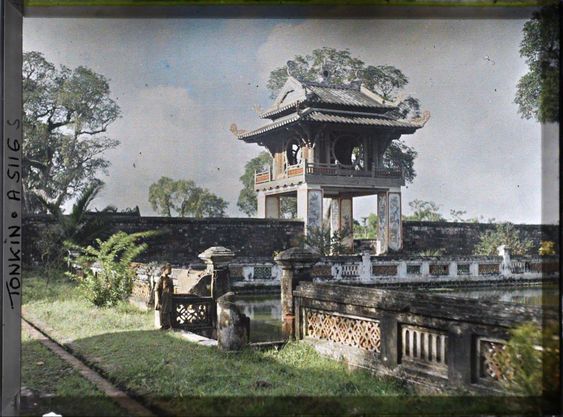
Unique Architecture of the Temple of Literature
The architecture of the Temple of Literature – Quốc Tử Giám is considered unique and beautiful, showcasing a harmonious blend of traditional architecture and Confucian philosophy. Here are some highlights of its architecture:
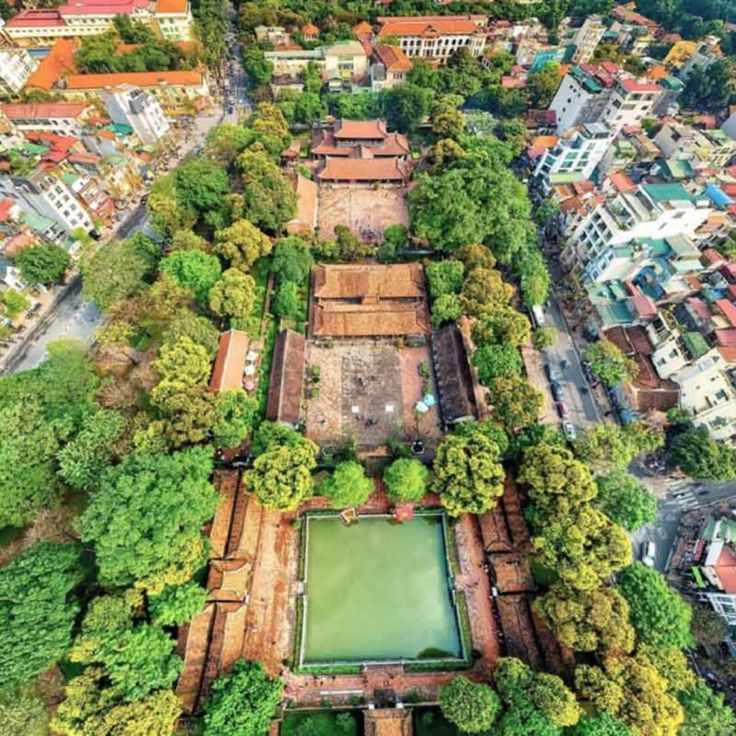
Attractions Inside the Temple of Literature
1. Temple of Literature Gate (Văn Miếu Môn)
Văn Miếu Môn, also known as the Gate of the Temple of Literature, is one of the main entrances to the Temple of Literature, located on the eastern side of the temple complex. It serves as the primary gateway for visitors entering the site.
The architecture of Văn Miếu Môn is impressive and dignified, reflecting the solemn beauty of traditional Vietnamese architecture. It is a popular spot for tourists to capture photos due to its picturesque design and historical significance. The combination of its beautiful architecture and rich cultural heritage creates striking and unique photographic opportunities for visitors exploring the Temple of Literature – Quốc Tử Giám.
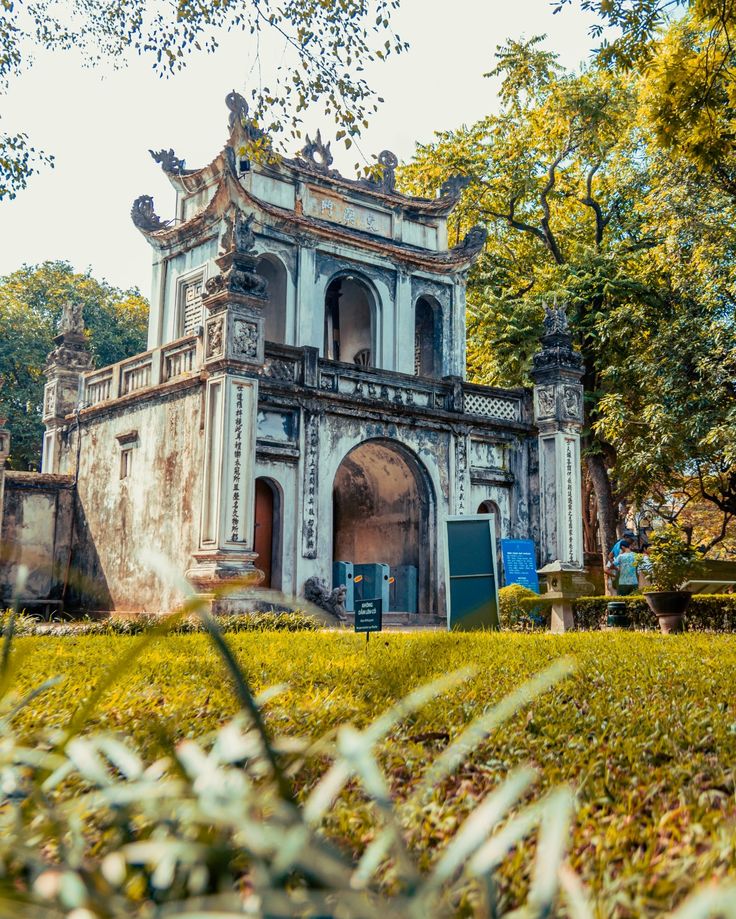
2. Lake of Literature (Hồ Văn) and Garden of Stelae (Vườn Giám)
The Lake of Literature, also known as Hồ Văn or Hồ Minh Đường, is situated in the southeast part of the Temple of Literature. This rectangular artificial lake provides a serene and tranquil space amidst the bustling city. Surrounded by lush greenery and traditional stone columns, the lake creates a picturesque and peaceful setting.
Adjacent to the Lake of Literature is the Garden of Stelae (Vườn Giám) located in the northeast corner of the Temple of Literature. This garden features a series of stone stelae mounted on elevated platforms, forming a vast and impressive space. The stelae commemorate scholars who excelled in their studies, contributing to the scholarly legacy celebrated within the temple complex.
Together, the Lake of Literature and Garden of Stelae add to the cultural and historical richness of the Temple of Literature, offering visitors a tranquil retreat and insights into Vietnam's scholarly traditions.
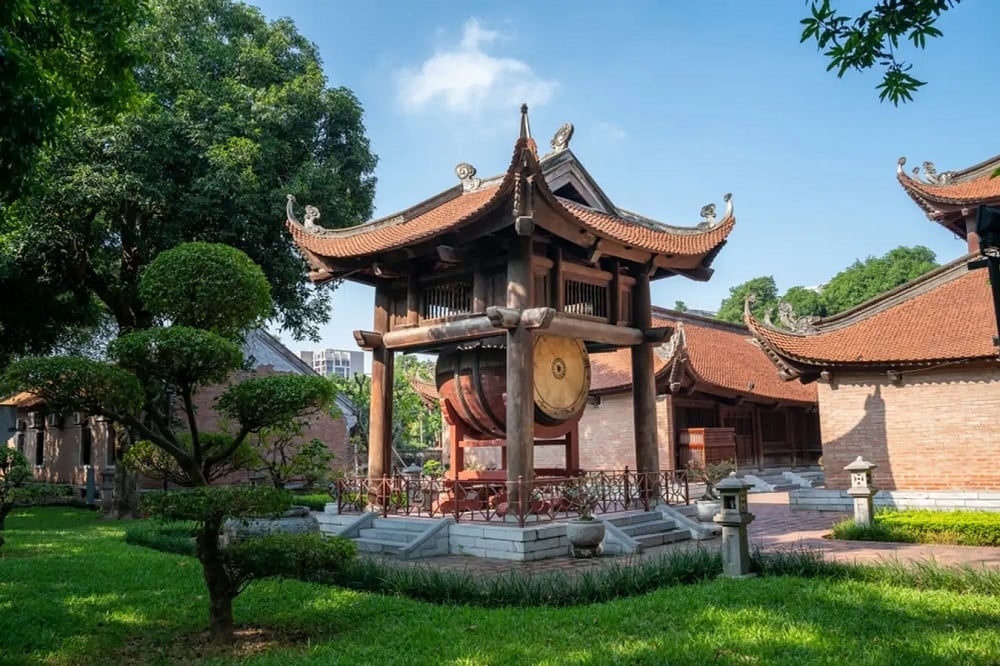
3. Great Middle Gate
The Great Middle Gate (Đại Trung Môn) is the second gate of significant historical and cultural importance within the architecture of the Temple of Literature. Situated on the northern side of the temple complex, it stands between the Garden of Stelae (Vườn Giám) and the Temple of Confucius (Đền Quốc Tử Giám).
This gate features traditional architectural elements, including two large stone columns on either side, a curved roof, and intricate decorative details. The Great Middle Gate holds symbolic significance and serves as a notable landmark within the Temple of Literature, showcasing the refined craftsmanship of Vietnamese traditional architecture.
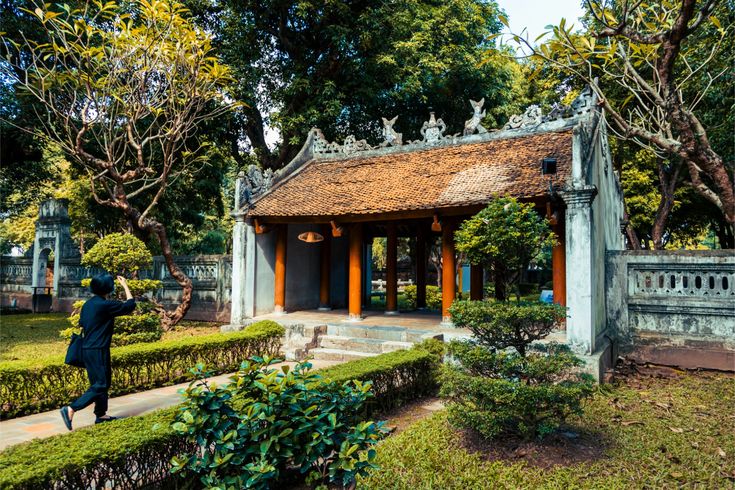
4. Pavilion of Literature (Khuê Văn Các)
Khuê Văn Các is located on the western side of the Temple of Literature – Quốc Tử Giám. It is a literary pavilion featuring traditional architecture, characterized by a curved roof and intricately carved stone columns.
The Pavilion of Literature was constructed as a tribute to honor scholars, writers, and individuals who have made significant contributions to the culture and education of Vietnam. It serves as a symbol of literary achievement and intellectual pursuit within the Temple of Literature complex. The architectural beauty of Khuê Văn Các reflects the profound respect for scholarly pursuits and cultural heritage in Vietnamese society.
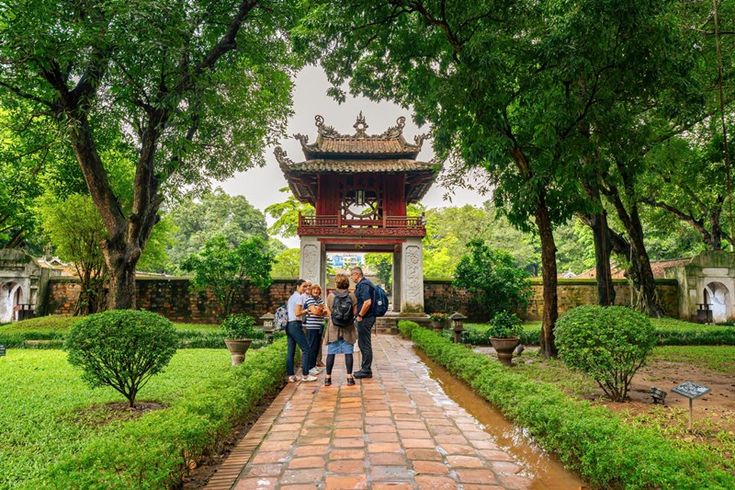
5. Stelae of Scholars and Thiên Quang Well
The Stelae of Scholars are stone tablets placed on elevated platforms, forming a longitudinal corridor within the garden area between the Great Middle Gate (Đại Trung Môn) and the Temple of Confucius (Đền Quốc Tử Giám). Each stela bears the names of distinguished scholars who attained bachelor's, master's, and higher degrees, showcasing reverence and homage to knowledge and education.
The Thiên Quang Well is located near the Stelae of Scholars within the premises of the Temple of Literature. Also known as Ao Văn (Well of Literature), it is considered a place that gathers the essence of the universe, illuminating knowledge and wisdom. The well symbolizes the enlightenment and intellectual enlightenment associated with scholarly pursuits and academic excellence.
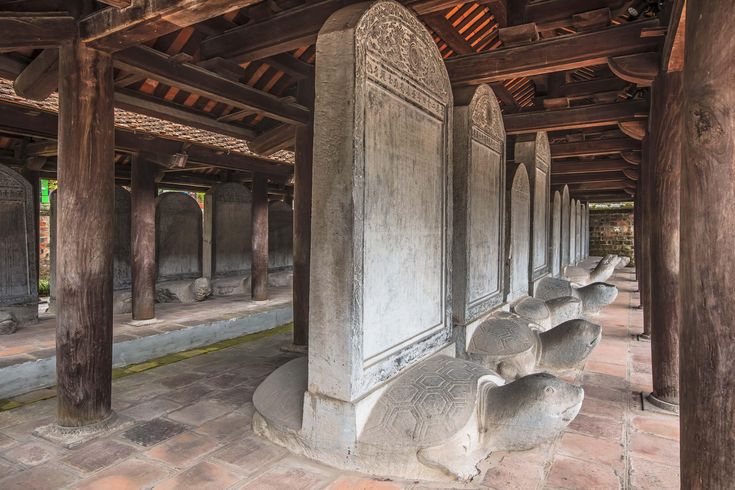
6. The Khải Thánh Temple
The Khải Thánh Temple is situated on the western side of the Temple of Literature – Quốc Tử Giám, near the Great Middle Gate (Đại Trung Môn) and the Khuê Văn Các. Inside the temple, there are altars and statues of deities. Previously, the Khải Thánh Temple served as a residential area with 150 rooms for students. In 1946, during the French colonial period, the temple was heavily damaged by artillery fire, resulting in complete destruction. Subsequently, the temple was reconstructed and preserved to this day.

7. The Grand Ceremonial Hall and Great Main Gate
The Grand Ceremonial Hall (Đại Bái Đường) served as a gathering place for talented students participating in traditional ceremonies. Its architecture features nine simple yet elegant pavilions.
The Great Main Gate (Đại Thành Môn) is an impressive structure, tall and sturdy, symbolizing the success and prestige of knowledge. It is also the gateway through which all successful candidates must pass to enter the Temple of Literature – Quốc Tử Giám for their academic visits.

Things to Do When Visiting the Temple of Literature - Quốc Tử Giám
Explore Historical Architecture: Discover the unique architecture of the Temple of Literature - Quốc Tử Giám, from its main gates, shrines, Doctoral Stelae, to its corridors and green gardens. This is an opportunity to gain a deeper understanding of Vietnam's feudal history and culture.
Virtual Doctoral Stelae Inscription: Experience virtually inscribing your name on the Doctoral Stelae online, honoring and commemorating Vietnam's educational tradition and knowledge.
Attend Events and Festivals: If possible, participate in events and festivals held at the Temple of Literature - Quốc Tử Giám such as ceremonies, folk songs, or other traditional cultural activities.
Purchase Souvenirs: Explore souvenir shops around the Temple of Literature to buy handmade crafts, books on history and culture, or other memorable souvenirs to take home.
Relax and Unwind: Enjoy the tranquil space of the Temple of Literature, find a quiet corner to rest and relax under the shade of trees or by the water's edge within the premises.
Learn History and Culture: Join guided tour programs to delve deeper into the history, culture, and significance of each site within the monument complex.
Tips for Visiting the Temple of Literature
When visiting the Temple of Literature - Quốc Tử Giám in Hanoi, Vietnam, there are some important tips to keep in mind for an enjoyable and memorable experience:
In summary, thorough preparation before visiting the Temple of Literature - Quốc Tử Giám and adhering to respectful etiquette are key to having a successful and memorable visit.

